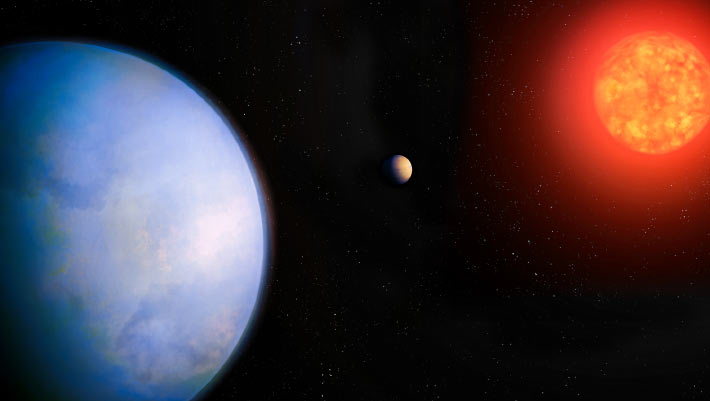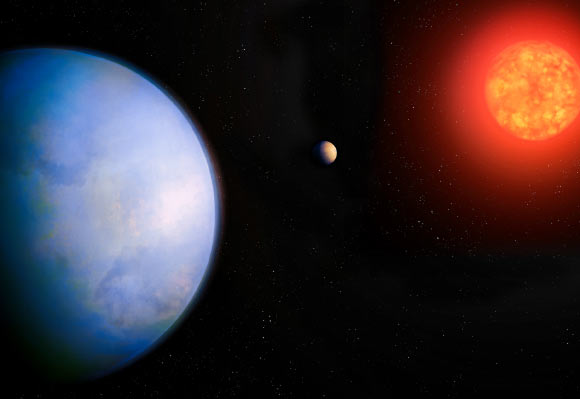Gliese 251 is an early red dwarf star and the 74th closest star system to our Sun.
An artist’s conception of the Gliese 251 system, showing Gliese 251c (left), its host star (right), and the previously-discovered planet Gliese 251b (middle). Image credit: Michael Marcheschi / m2design.
Gliese 251 is a bright M-dwarf star located 5.58 parsecs (18 light-years) away in the constellation of Gemini.
Also known as GJ 251, HD 265866 or Wolf 294, the star likely hosts at least two super-Earths: Gliese 251b and Gliese 251c.
First discovered in 2020, Gliese 251b has a mass of 3.85 Earth masses and an orbital period of 14.2 days.
The newfound exoplanet Gliese 251c has a mass of 3.84 Earth masses and an orbital period of 53.6 days.
“We have found so many exoplanets at this point that discovering a new one is not such a big deal,” said University of California, Irvine astronomer Paul Robertson.
“What makes this especially valuable is that its host star is close by, at just about 18 light-years away. Cosmically speaking, it’s practically next door.”
Gliese 251c was found using data from the Habitable-Zone Planet Finder (HPF), a high-precision, near-infrared spectrograph on the Hobby-Eberly Telescope at the McDonald Observatory in Texas.
The planet’s signal was further confirmed using the NEID spectrometer at the Kitt Peak National Observatory in Arizona.
“We are at the cutting edge of technology and analysis methods with this system,” said Design West Technologies data scientist Corey Beard.
“While its discovery is quite statistically significant, we are still determining the status of the planet due to the uncertainty of our instruments and methods.”
“We need the next generation of telescopes to directly image this candidate, but what we also need is community investment.”
Gliese 251c’s proximity to Earth makes it an ideal target for future direct imaging studies with the future Thirty Meter Telescope (TMT).
The large size of TMT’s mirrors may enable it to directly image faint exoplanets like Gliese 251c and confirm the presence of water.
“TMT will be the only telescope with sufficient resolution to image exoplanets like this one,” Dr. Beard said.
“It’s just not possible with smaller telescopes.”
The team’s results were published in the Astronomical Journal.
_____
Corey Beard et al. 2025. Discovery of a Nearby Habitable Zone Super-Earth Candidate Amenable to Direct Imaging. AJ 170, 279; doi: 10.3847/1538-3881/ae0e20


